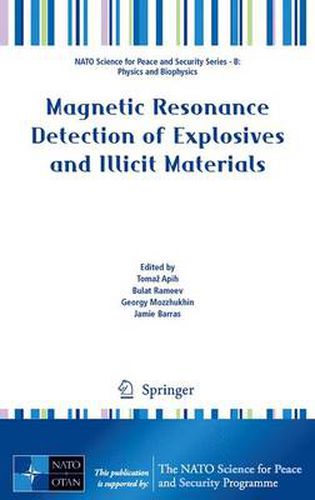Readings Newsletter
Become a Readings Member to make your shopping experience even easier.
Sign in or sign up for free!
You’re not far away from qualifying for FREE standard shipping within Australia
You’ve qualified for FREE standard shipping within Australia
The cart is loading…






This title is printed to order. This book may have been self-published. If so, we cannot guarantee the quality of the content. In the main most books will have gone through the editing process however some may not. We therefore suggest that you be aware of this before ordering this book. If in doubt check either the author or publisher’s details as we are unable to accept any returns unless they are faulty. Please contact us if you have any questions.
Detection of concealed explosives is a notoriously difficult problem, and many different approaches have been proposed to solve this problem. Nuclear quadrupole resonance (NQR) is unique in many ways. It operates in a safe AM radio frequency range, and it can remotely detect unique fingerprint (NQR spectrum) of many explosives, such as TNT or RDX. As such, the detection of target does not depend on the shape or material of the container, or the presence of metallic object such as triggers etc. Spectra of chemically similar compounds differ enough that their presence never causes interference or false alarms. Unfortunately, widespread use is prevented due to low sensitivity, radiofrequency interference from the noisy environment, and inability to detect liquid explosives. This book presents current state of the art of the attempts to overcome NQR sensitivity problem, either by increasing the strengths of signals generated, or by increasing the specificity of the technique through a better understanding of the factors that affect the quadrupolar parameters of specific explosives. The use of these specific quadrupolar parameters is demonstrated on signal processing techniques that can detect weak signals, which are hidden in a noisy background. The problem of differentiation of liquid explosives and benign liquids in closed containers is approached by measurements of different nuclear magnetic resonance (NMR) parameters. As shown, a couple of solutions has reached a prototype stage and could find their use in a near future.
$9.00 standard shipping within Australia
FREE standard shipping within Australia for orders over $100.00
Express & International shipping calculated at checkout
This title is printed to order. This book may have been self-published. If so, we cannot guarantee the quality of the content. In the main most books will have gone through the editing process however some may not. We therefore suggest that you be aware of this before ordering this book. If in doubt check either the author or publisher’s details as we are unable to accept any returns unless they are faulty. Please contact us if you have any questions.
Detection of concealed explosives is a notoriously difficult problem, and many different approaches have been proposed to solve this problem. Nuclear quadrupole resonance (NQR) is unique in many ways. It operates in a safe AM radio frequency range, and it can remotely detect unique fingerprint (NQR spectrum) of many explosives, such as TNT or RDX. As such, the detection of target does not depend on the shape or material of the container, or the presence of metallic object such as triggers etc. Spectra of chemically similar compounds differ enough that their presence never causes interference or false alarms. Unfortunately, widespread use is prevented due to low sensitivity, radiofrequency interference from the noisy environment, and inability to detect liquid explosives. This book presents current state of the art of the attempts to overcome NQR sensitivity problem, either by increasing the strengths of signals generated, or by increasing the specificity of the technique through a better understanding of the factors that affect the quadrupolar parameters of specific explosives. The use of these specific quadrupolar parameters is demonstrated on signal processing techniques that can detect weak signals, which are hidden in a noisy background. The problem of differentiation of liquid explosives and benign liquids in closed containers is approached by measurements of different nuclear magnetic resonance (NMR) parameters. As shown, a couple of solutions has reached a prototype stage and could find their use in a near future.